Cabbage stir-fry with meat, a beloved dish in many Asian cuisines, is celebrated for its harmonious blend of textures and flavors. This humble yet satisfying meal combines tender meat, crisp cabbage, and aromatic seasonings into a single pan, creating a symphony of taste that appeals to both home cooks and food enthusiasts alike. While variations of this dish exist across regions, the authentic preparation method prioritizes simplicity, fresh ingredients, and precise cooking techniques. This article delves into the step-by-step process of creating this classic dish, ensuring that every bite captures the essence of tradition and culinary mastery.
The Cultural Significance of Cabbage Stir-Fry with Meat
Before diving into the recipe, it is essential to understand the cultural context of this dish. In many East Asian households, cabbage stir-fry with meat is a staple, often gracing dinner tables during family gatherings or everyday meals. Its popularity stems from its affordability, nutritional value, and adaptability to seasonal ingredients. Cabbage, rich in fiber and vitamins, pairs seamlessly with protein-rich meats like pork, beef, or chicken, creating a balanced meal that satisfies both the palate and the body.
The dish’s humble origins reflect the resourcefulness of home cooks who transformed simple, readily available ingredients into a feast. Over centuries, regional adaptations emerged, incorporating local spices, cooking fats, and techniques. However, the core principles remain unchanged: tender meat, perfectly cooked cabbage, and a delicate balance of savory, salty, and aromatic notes.
Ingredients: The Foundation of Flavor
To achieve an authentic cabbage stir-fry with meat, selecting the right ingredients is paramount. Below is a detailed list of components, each playing a crucial role in the dish’s final character:
-
Meat (300 grams):

- Pork belly is the traditional choice, prized for its fatty richness, which melts during cooking, infusing the dish with succulence.
- Alternatives: Lean pork, beef (such as flank or sirloin), or chicken thighs can be used. For a vegetarian twist, substitute with firm tofu or mushrooms.
-
Cabbage (1 medium head, approximately 600 grams):
- Opt for Napa cabbage (Chinese cabbage) for its delicate leaves and mild sweetness, or green cabbage for a crunchier texture.
- Wash thoroughly and pat dry to prevent excess moisture from diluting the flavors.
-
Aromatics and Seasonings:
- Garlic (4 cloves, minced): Adds pungent depth.
- Ginger (1-inch piece, grated): Imparts a subtle warmth.
- Scallions (3 stalks, sliced): Separate white and green parts; whites are sautéed first, greens used as garnish.
- Dried chili flakes (optional): For a hint of heat.
-
Sauces and Condiments:
- Soy sauce (2 tablespoons): Use light soy sauce for saltiness; dark soy sauce adds color.
- Oyster sauce (1 tablespoon): Enhances umami richness.
- Sesame oil (1 teaspoon): Finishing touch for nuttiness.
- Rice vinegar (1 teaspoon): Balances the dish’s flavors.
-
Cooking Fat:
- Vegetable oil (2 tablespoons): Neutral-flavored oil like peanut or canola.
- Optional: Pork lard for added depth (traditional in some regions).
-
Thickening Agent (if desired):
- Cornstarch (1 teaspoon mixed with 1 tablespoon water): Creates a glossy sauce.
Preparation: Mise en Place
Authentic cooking begins with meticulous preparation, a practice known as mise en place in professional kitchens. This ensures smooth execution and prevents overcooking ingredients.
-
Meat Preparation:
- Slice the meat against the grain into thin, bite-sized strips. This ensures tenderness.
- Marinate the meat in a mixture of 1 tablespoon soy sauce, 1 teaspoon cornstarch, and 1 teaspoon vegetable oil for 15–20 minutes. The cornstarch tenderizes the meat, while oil seals in moisture.
-
Cabbage Preparation:
- Remove the core of the cabbage and separate the leaves.
- Stack 4–5 leaves at a time, roll them tightly, and slice into thin shreds (about ¼-inch wide). This technique, called chiffonade, ensures even cooking.
-
Aromatics:
Mince garlic and grate ginger. Slice scallions, keeping whites and greens separate.
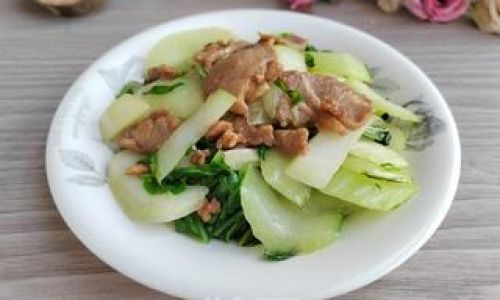
-
Sauce Mixture:
Combine remaining soy sauce, oyster sauce, rice vinegar, and 2 tablespoons of water in a small bowl. This pre-mixed sauce streamlines cooking.
Cooking Process: Mastering the Stir-Fry
Stir-frying is a high-heat, quick-cooking method that requires attention to detail. The goal is to sear the meat and vegetables rapidly, preserving their texture and vibrant flavors.
-
Heat the Wok:
- Place a well-seasoned carbon-steel wok or a large skillet over high heat. Allow it to smoke lightly—this ensures the pan is hot enough for proper searing.
- Add 2 tablespoons of vegetable oil and swirl to coat the pan.
-
Sear the Meat:
- Add the marinated meat to the wok, spreading it into a single layer. Allow it to cook undisturbed for 30 seconds to develop a golden crust.
- Stir-fry for 2–3 minutes until the meat is browned but still slightly pink in the center. Remove and set aside.
-
Sauté Aromatics:
Reduce the heat to medium and add the white parts of the scallions, garlic, and ginger. Stir-fry for 30 seconds until fragrant, taking care not to burn the garlic.
-
Cook the Cabbage:
- Increase the heat to high and add the shredded cabbage. Toss vigorously to coat with the aromatics.
- Stir-fry for 3–4 minutes until the cabbage wilts slightly but retains its crispness. Avoid overcooking, as mushy cabbage ruins the dish’s texture.
-
Combine and Season:
- Return the meat to the wok. Pour in the pre-mixed sauce and toss to combine.
- If using cornstarch slurry, add it now and stir until the sauce thickens (1–2 minutes).
- Drizzle with sesame oil and toss once more.
-
Final Touches:
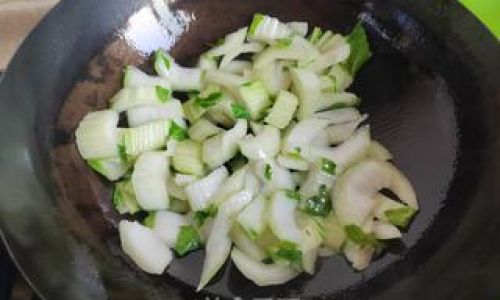
- Remove from heat and garnish with the reserved scallion greens.
- Serve immediately with steamed rice or noodles.
Tips for Perfecting the Dish
-
Control the Heat:
- A smoking-hot wok is essential for achieving the wok hei (breath of the wok), a smoky flavor characteristic of authentic stir-fries.
-
Do Not Overcrowd the Pan:
Cook in batches if necessary. Overcrowding lowers the pan’s temperature, leading to steaming rather than searing.
-
Adjust Seasonings to Taste:
Taste before serving and adjust soy sauce or vinegar as needed. Some regions prefer a sweeter profile; add a pinch of sugar if desired.
-
Texture Matters:
The cabbage should retain a slight crunch. Overcooking renders it soggy, while undercooking leaves it raw-tasting.
Common Mistakes and How to Avoid Them
-
Soggy Cabbage:
Ensure the cabbage is thoroughly dried after washing. Excess moisture steams the vegetable instead of stir-frying it.
-
Tough Meat:

Slicing against the grain and marinating with cornstarch prevents toughness. Avoid overcooking the meat.
-
Bland Flavor:
Layer flavors by searing the meat first, then building complexity with aromatics and sauces.
Regional Variations
While the core recipe remains consistent, regional adaptations offer exciting twists:
- Sichuan-Style: Add doubanjiang (fermented broad bean paste) and Sichuan peppercorns for a numbing-spicy kick.
- Korean-Inspired: Incorporate gochujang (chili paste) and serve with kimchi.
- Cantonese Version: Use shrimp instead of meat and add Shaoxing wine for depth.
Health Benefits and Nutritional Value
Cabbage stir-fry with meat is a nutrient-dense dish:
- Cabbage is low in calories but high in fiber, vitamins C and K, and antioxidants.
- Meat provides protein, iron, and B vitamins.
- Ginger and garlic offer anti-inflammatory and immune-boosting properties.
Stir-frying also preserves more nutrients compared to boiling or steaming, as it minimizes cooking time.
Pairing Suggestions
- Steamed Jasmine Rice: The fluffy grains complement the dish’s savory notes.
- Fried Rice: Transform leftovers into a heartier meal by mixing with day-old rice.
- Noodles: Serve over egg noodles or udon for a filling variation.
Conclusion: The Art of Simplicity
Cabbage stir-fry with meat is more than a recipe—it is a testament to the beauty of simplicity in cooking. By honoring traditional techniques and using quality ingredients, even a humble combination of cabbage and meat can become a culinary masterpiece. Whether enjoyed as a weeknight dinner or a centerpiece at a gathering, this dish embodies the harmony of flavor, texture, and nourishment. So, gather your ingredients, fire up the wok, and savor the timeless taste of authenticity.

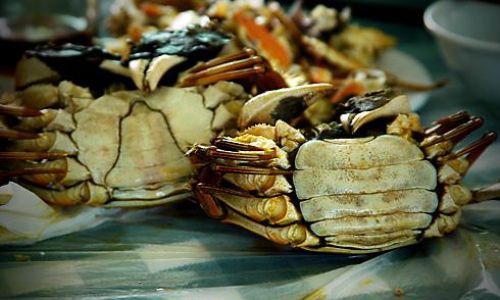
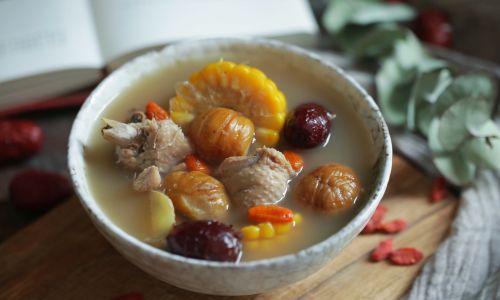
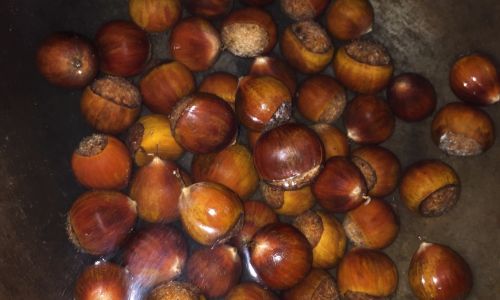
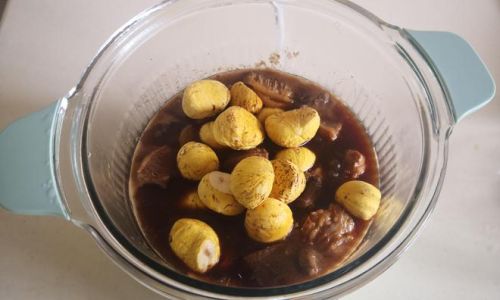
0 comments